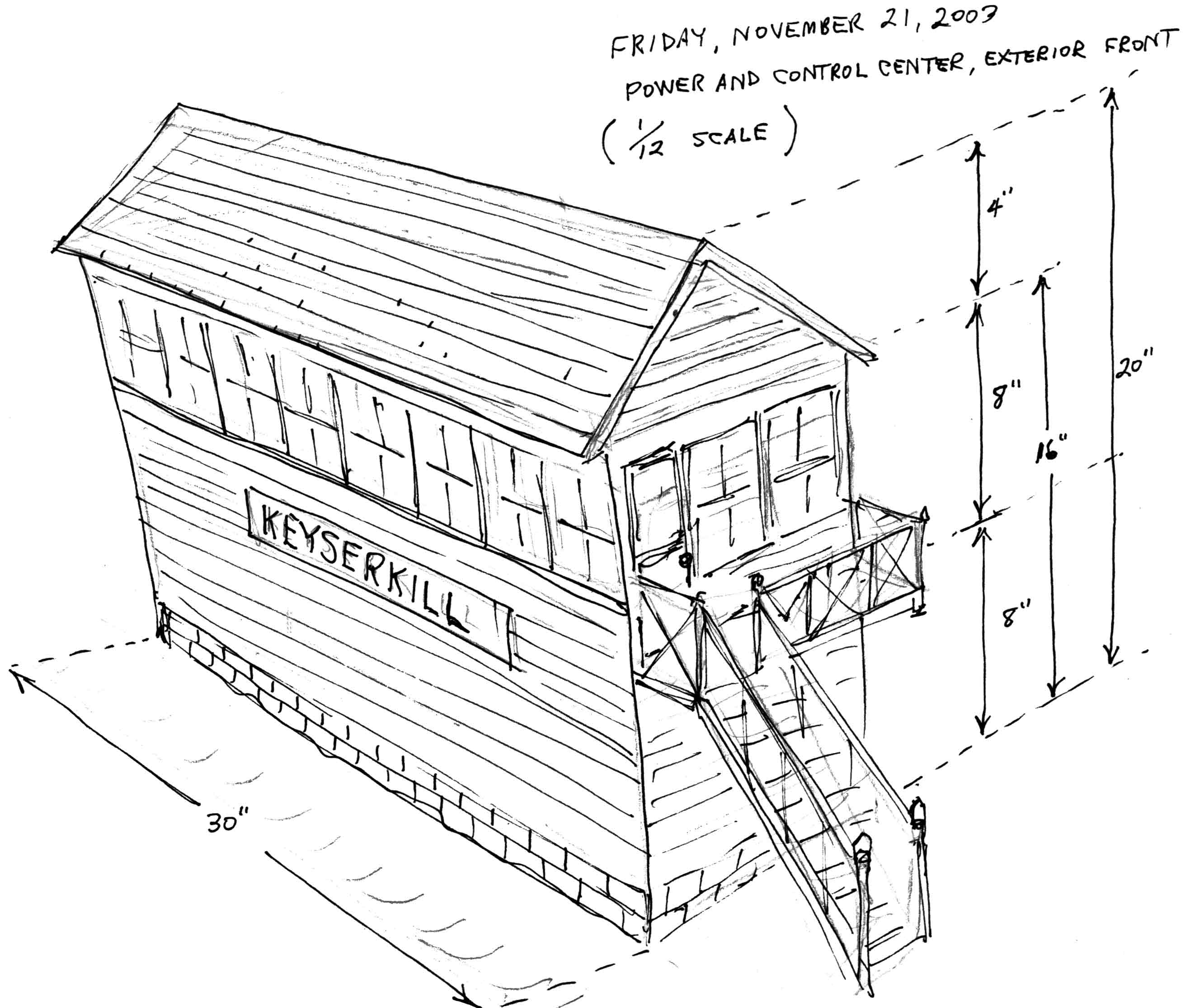--more--

1. Actual signal boxes contained "lever frames" (a long row of large levers) in the upper floor. Our R044 lever bank resembles (and was probably intended by Hornby to resemble) part of an actual "lever frame" (see picture of a 3-lever bank. An R044 lever switch is about 3 inches high, representing a height of about 3 feet in one-twelfth scale. When mounted upon a 1-inch or 2-inch base, the tops of the levers would reach a height of 4 or 5 inches, corresponding to a height of 4 or 5 feet. This would be a reasonable height for a lever in an actual lever frame.
2. If we decide to outfit our "signal box" with interior details, we could save a great deal of construction time by simply purchasing items of one-twelfth scale "dollhouse" furniture, such as chairs, clocks, desks, shelves and stoves. Our builder is a dedicated "scratchbuilder" when it comes to unique and imaginative 00-scale or HO-scale layout structures, but neither his enthusiasm nor his patience embraces the "scratchbuilding" of specialized interior furnishings for one-twelfth scale dollhouses.
Note: The "Keyserkill" nameboard on the front wall denotes the geographical location of the signal box. For example, if a signal box were located at a place known as "Riverside Junction", the nameboard might say "Riverside Junction", or simply "Riverside". Such nameboards would assist passing train crews in confirming their locations during a journey. A similar identification method can be seen along the interstate highways in America, where bridges that carry crossing roads over the highway are equipped with nameboards that identify the crossing road. Motorists driving along the highway are thus assisted in confirming their locations.
Signal boxes were sometimes built in the form of bridges which spanned the railway tracks. For a photograph of such an overhead signal box, please see, in our Bibliography, the following reference: Scott-Morton, Colin, "Semaphores doomed by resignalling" (we do not reproduce the photo in these pages, due to copyright regulations; however, our bibliography provides an exact reference to the periodical that published the photo).
Go to top of page